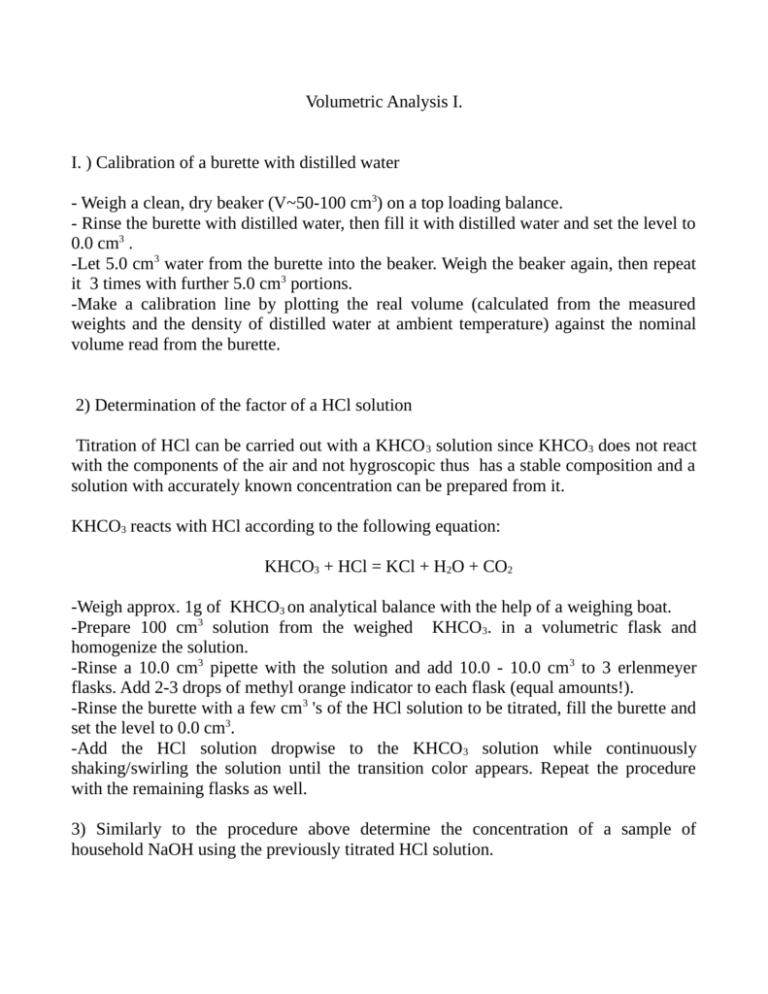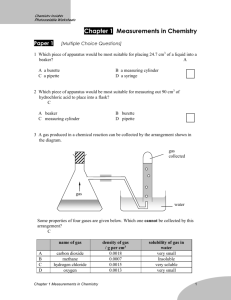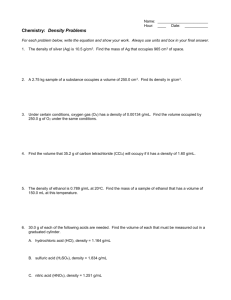Volumetric Analysis I. I. ) Calibration of a burette with distilled water
advertisement

Volumetric Analysis I. I. ) Calibration of a burette with distilled water - Weigh a clean, dry beaker (V~50-100 cm3) on a top loading balance. - Rinse the burette with distilled water, then fill it with distilled water and set the level to 0.0 cm3 . -Let 5.0 cm3 water from the burette into the beaker. Weigh the beaker again, then repeat it 3 times with further 5.0 cm3 portions. -Make a calibration line by plotting the real volume (calculated from the measured weights and the density of distilled water at ambient temperature) against the nominal volume read from the burette. 2) Determination of the factor of a HCl solution Titration of HCl can be carried out with a KHCO 3 solution since KHCO3 does not react with the components of the air and not hygroscopic thus has a stable composition and a solution with accurately known concentration can be prepared from it. KHCO3 reacts with HCl according to the following equation: KHCO3 + HCl = KCl + H2O + CO2 -Weigh approx. 1g of KHCO3 on analytical balance with the help of a weighing boat. -Prepare 100 cm3 solution from the weighed KHCO3. in a volumetric flask and homogenize the solution. -Rinse a 10.0 cm3 pipette with the solution and add 10.0 - 10.0 cm3 to 3 erlenmeyer flasks. Add 2-3 drops of methyl orange indicator to each flask (equal amounts!). -Rinse the burette with a few cm3 's of the HCl solution to be titrated, fill the burette and set the level to 0.0 cm3. -Add the HCl solution dropwise to the KHCO3 solution while continuously shaking/swirling the solution until the transition color appears. Repeat the procedure with the remaining flasks as well. 3) Similarly to the procedure above determine the concentration of a sample of household NaOH using the previously titrated HCl solution.





